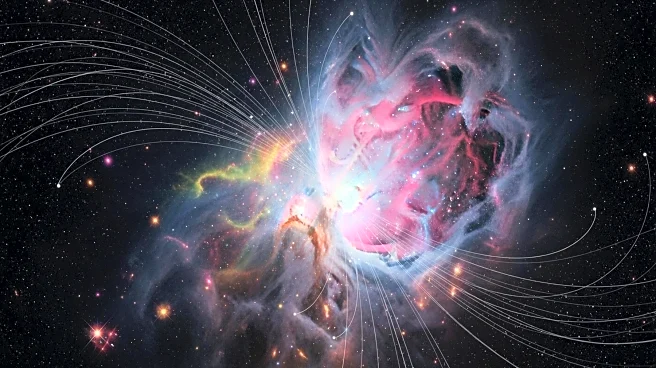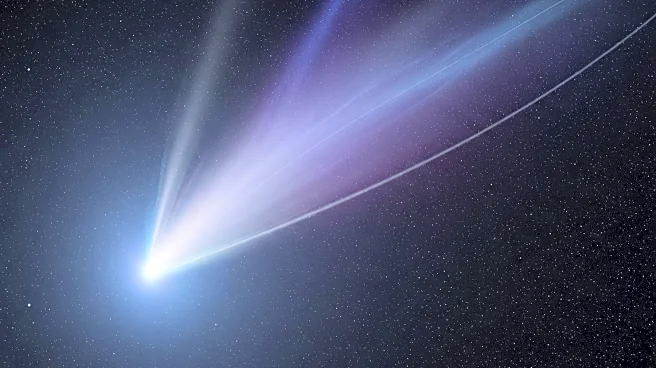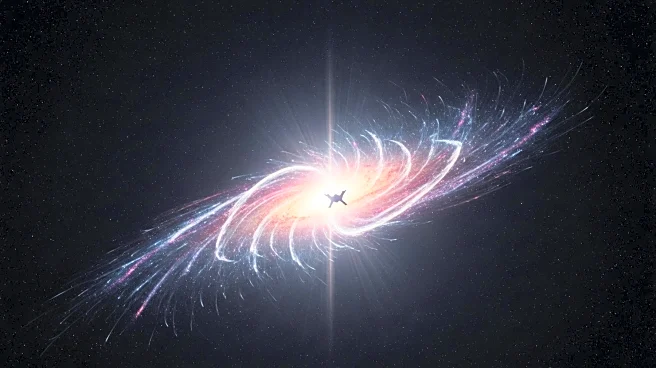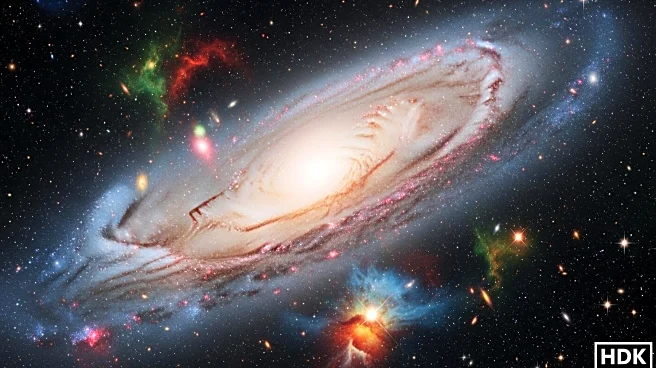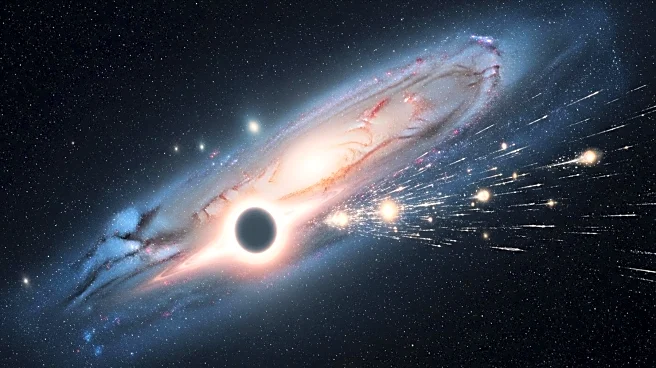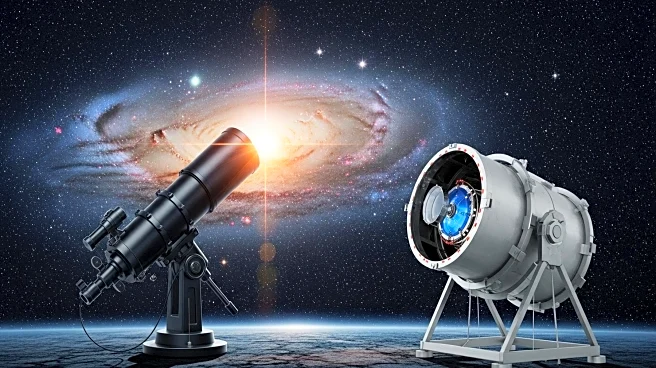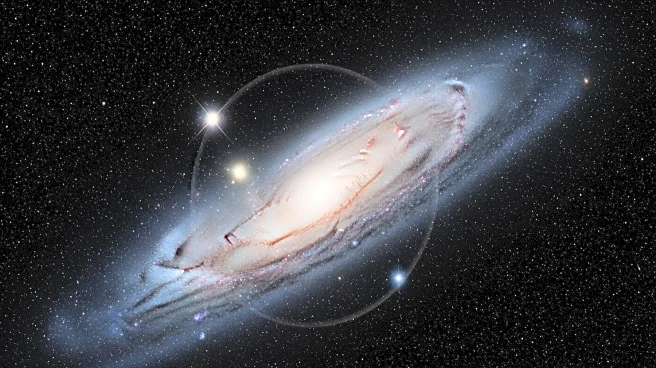What is the story about?
What's Happening?
The Euclid Consortium has published the largest simulation of the universe, mapping 3.4 billion galaxies and tracking gravitational interactions of over 4 trillion particles. Named Flagship 2, the simulation was developed using an algorithm by astrophysicist Joachim Stadel and run on the supercomputer Piz Daint. The simulation aids in preparing for the analysis of data from the Euclid space telescope, which has been mapping galaxies since 2023 to study dark energy and dark matter distribution. The simulation is based on the standard cosmological model, but Euclid's observations may challenge current understandings, particularly regarding dark energy.
Why It's Important?
The simulation is a critical tool for astrophysicists to interpret the vast data generated by the Euclid telescope, accelerating the processing and analysis of cosmic phenomena. By simulating the universe's structure, researchers can test theories about dark energy and dark matter, potentially leading to breakthroughs in understanding the universe's expansion and composition. The project exemplifies the synergy between computational power and observational astronomy, pushing the boundaries of cosmological research and enhancing predictive models.
What's Next?
Euclid's observations will continue to provide data that may reveal new characteristics of dark energy, challenging the notion of it being a constant force. The next set of observational data is scheduled for release in spring 2026, which could offer further insights into the universe's expansion history. Researchers anticipate that these findings may necessitate revisions to the standard cosmological model, prompting new theories and explorations in astrophysics.
AI Generated Content
Do you find this article useful?


